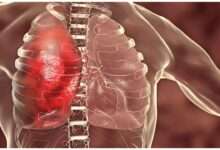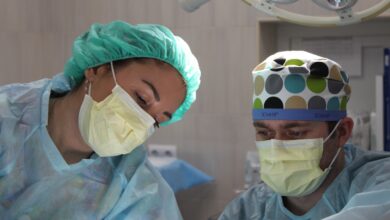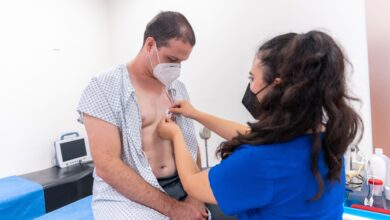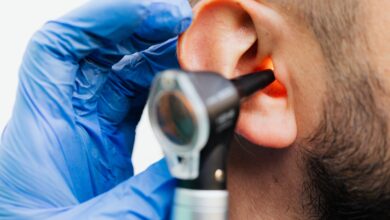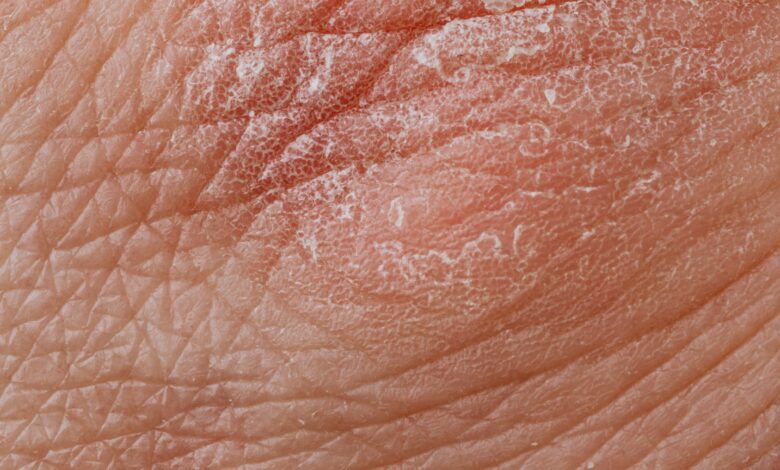
Eczema is a pruritic dermatosis characterized by a non-contagious inflammation of the skin which is accompanied by redness, fine vesicles, scales and itching. How to recognize eczema? What are the causes and risk factors? Can eczema be prevented? How to treat it? Here are our explanations.
How to recognize eczema?
Eczema is an itchy dermatosis characterized by a non-contagious inflammation of the skin which is accompanied by:
- redness;
- fine vesicles;
- scales, i.e. thin strips of skin that detach from the epidermis;
- itchy.
Eczema can start very early in life, and is seen even in infants. Affected individuals experience periods commonly referred to as “eczema flare-ups”, during which symptoms worsen. These relapses, of variable duration, are interspersed with periods of remission. Eczema is often associated with:
- asthma;
- various allergic reactions.
The mechanism of eczema is not yet well understood. It would affect both the immune system and the skin cells that act as a barrier for allergens. Eczema is a disorder of a genetic nature, but environmental factors influence its appearance, such as:
- the presence of chemical irritants;
- the stress .
Among all skin diseases, eczema is the most common: this disease motivates up to 30% of dermatology consultations. In industrialized countries, it would reach 15 to 30% of children and 2 to 10% of adults . According to recent estimates, cases of eczema have doubled and perhaps even tripled over the past 30 years.
eczema in babies
To explain this increasing incidence of eczema, various hypotheses have been put forward. For example, it is suspected that the change in infant eating habits caused by the abandonment of breastfeeding and early exposure to food allergens would play a role in the onset of this disease at a young age. Indeed, it seems that exclusive breastfeeding of infants during the first 3 months partially protects against atopic dermatitis . On the other hand, there would be no link between the early introduction of solid foods and the appearance of eczema in young children .
What are the main types of eczema?
There are several types of eczema, although the term “eczema” is usually used to refer to the different variants of the disease.
Atopic eczema or atopic dermatitis
It is the most common form of chronic eczema. Atopy is the tendency to react with allergic reactions mediated by antibodies called IgE in contact with allergens normally harmless to the rest of the population such as:
- dust ;
- pollen ;
- animal hair;
- etc.
Atopic people often present, simultaneously or alternately, with various allergic reactions, such as:
- hay fever ;
- hives;
- asthma;
- food allergies.
These allergies often have a hereditary component since they are observed in many cases within families in which at least one of the members suffers from them.
Atopic dermatitis affects:
- 10 to 20% of children;
- 2 to 3% of adults in Europe.
The disease most often begins in infants and most often persists through childhood up to 5-6 years of age, but sometimes persists into adulthood in about 15% of patients.
Atopic dermatitis is a multifactorial disease that involves:
- environmental factors;
- genetic factors: 50 to 70% of parents of atopic children have a sign of atopy such as eczema in childhood, for example, and 70% of identical twins both have atopic eczema. This genetic factor is polygenic because it affects at least two types of genes.
Genetic factors
Genes of the superficial skin barrier
The skin has a very thin and very resistant surface barrier. However, patients with atopic dermatitis are carriers of genetic mutations, in particular on the gene coding for filaggrin. This is a structural protein of the epidermis playing a role in the structure of the skin barrier and maintaining an optimal level of skin hydration. As the skin plays its barrier role less well, antigens and chemical irritants can then more easily penetrate it.
Skin immune system genes
Atopic people react more to their environment and trigger inflammatory skin reactions in the presence of antigens, involving in particular:
- Langerhans cells, ie antigen-presenting cells;
- antibody-producing lymphocytes or white blood cells;
- etc.
Environmental factors
Atopic dermatitis is a disease in which environmental factors are involved, including:
The digestive flora
Over the past few years, we have been discovering the extent to which the microbiota, or composition of the digestive bacterial flora, plays a role in many diseases and in the individual response to treatment. Atopic dermatitis is no exception to this rule since it has been discovered that the microbiota is a complex ecosystem that is involved in the maturation of the immune system. Abnormalities of early diversification of the intestinal microbiota have been observed in children at risk of atopy as well as in newborns at risk of atopy.
Skin flora
The skin microbiome of the newborn is gradually formed after birth from the microbiome of the mother and the environment. As for the intestinal microbiota, there are differences between the skin microbiome of atopic children and that of non-atopic children, especially during flare-ups of atopic dermatitis.
Indeed, during these outbreaks, there is a proliferation of strains of staphylococci, including staphylococcus aureus in 90% of cases and staphylococcus epidermidis, related to a deficiency in cutaneous immunity through a deficiency in “antibiotics natural products” of the skin: beta defensins.
Thus, local treatments for atopic dermatitis tend to promote natural bacterial diversity on the surface of the skin to limit the place of Staphylococcus aureus. Therefore, antiseptics should be avoided in atopic dermatitis. On the other hand, local corticosteroid therapy, so dreaded by mothers, tends to promote bacterial diversity, to the detriment of Staphylococcus aureus.
The increase in the frequency of atopic dermatitis has been regular for several decades in developing countries, which suggests that environmental factors play a major role in the physiopathology of the disease and in particular the reduction in exposure to infectious agents in early childhood.
Recent studies confirm that the “western urban” lifestyle exposes you to an increased risk of atopic diseases compared to the “rural” lifestyle. Indeed, the western urban lifestyle is characterized by exposure to bacteria and parasites from early childhood, particularly in genetically predisposed populations and in the same geographical areas.
This therefore also evokes other factors more present in the “urban Western” way of life which remain to be scientifically proven, such as:
- the role of breastfeeding abandonment;
- milk allergy;
- the greatest concentration of polluting substances and allergens in the environment.
Finally, it should be noted that there is more childhood eczema in northern European countries than in southern European countries. One can therefore wonder if there are not factors that can lead to eczema in children in northern countries.
Is meticulous hygiene of young children in northern countries responsible for the increase in childhood eczema in these countries? Are children in Northern countries more subject to allergens than in the South? Can the colder climate explain the greater frequency of eczema in children in northern countries?
All of this data has made it possible to develop a protective “theory of biodiversity” for atopic dermatitis, which associates environmental biodiversity and the biodiversity of the various cutaneous and digestive microbiomes.
How does atopic dermatitis manifest?
- In infants, the lesions begin on the cheeks, or even the forehead and the scalp, then they extend to the extension faces of the arms and legs and the trunk. It is dry and rough or oozing and crusty redness, which is always itchy. The infant tends to put his hands there, which can cause scratching;
- After 2 years, the lesions of atopic dermatitis will predominate in the folds of flexion of the elbows and knees, even of the wrists;
- In adolescents and adults, the lesions are located mainly on the face and neck – the Anglo-Saxons speak of “head and neck dermatitis” – and the limbs. They are often thickened. We speak of lichenification of the skin.
Complications of atopic dermatitis
Superinfection with Staphylococcus aureus or “impetiginization” is responsible for purulent discharge, sometimes bubbles and yellow crusts like honey.
Superinfection with the herpes virus, especially HSV-1, is rare. It affects 5% of children with atopic dermatitis. Nevertheless, it is formidable, and results in:
- a sudden worsening of the disease;
- the appearance of small multiple vesicular lesions evoking those of chickenpox, giving sores.
This is called Kaposi-Juliusberg syndrome.
The management of atopic dermatitis in children therefore resorts to limiting the contributing factors and in particular the elements accentuating skin dryness by:
- applying moisturizers;
- avoiding baths that are too hot and prolonged;
- by using mild soaps, such as bath oil or surgras, for example.
Hydrotherapy is one of the therapeutic weapons to fight against atopic eczema, but it is generally only used in conjunction with conventional treatments based on creams containing cortisone during flare-ups in particular.
Contact dermatitis
Allergic contact dermatitis is characterized by eczema lesions appearing on average 3 days after skin contact with certain substances called allergens. This period can be extended to 10 days if it is the first contact with the allergen. This is an allergic reaction to the substance.
This allergic reaction does not necessarily occur during the first contact and can appear after several months or years of tolerance to the allergen. One can thus become allergic to a substance that one tolerated, for example, the nickel of the jewels or coins.
Evolution and complication of eczema
Evolution of eczema
Depending on the type of eczema, symptoms can last 1 or 2 weeks, or last for several years.
Complications
When scratched, patches of eczema ooze and become more irritated. Sometimes these areas can become infected. In particular, it is possible to contract:
- impetiginization, which is a bacterial superinfection, in particular with Staphylococcus Aureus, of eczema, characterized by the appearance of meliceric crusts, that is to say crusts resembling crystallized honey;
- a cellulitis. This complication is characterized by the sudden appearance of swelling on the skin of a limb, which becomes sensitive, red and hot.
In these cases, it is important to consult quickly.
The symptoms of eczema are itchy irritated red patches, dry skin crusts, scales… Discover all the symptoms in this article.
What are the symptoms of eczema?
Eczema symptoms include:
- itchy, irritated red patches;
- crusts of dry skin;
- scales, in specific areas of the body, depending on the type of eczema;
- itches ;
- the appearance of small vesicles.
Eventually, the skin can:
- become thicker, drier;
- lose hair;
- change in pigmentation.
Are you among those at risk of developing eczema? Do you know the risk factors? All our answers.
People at risk of eczema
People at risk for eczema are:
- people with a close relative, suffering from allergies such as allergic asthma, allergic rhinitis, food allergies, certain urticaria;
- people suffering from these allergies themselves;
- people who live in a dry climate;
- people living in an urban area;
- there is also a hereditary tendency for seborrheic eczema.
What are the risk factors for eczema?
Although eczema is a disease with a strong genetic component, many factors, which vary greatly from one individual to another, can make eczema worse.
Here are the main ones:
- irritations caused by skin contact such as wool and synthetic fibers, soaps and detergents, perfumes, cosmetics, sand, cigarette smoke, etc. ;
- allergens from food, plants, animals or air;
- damp heat;
- wet and dry the skin frequently;
- emotional factors, such as anxiety, relationship conflict and stress. Experts recognize, in fact, the great importance of emotional and psychological factors in the exacerbation of a multitude of skin diseases, including eczema ;
- skin infections, especially those caused by fungi, such as athlete’s foot.
In order to prevent eczema, it is particularly necessary to avoid certain foods. Discover the foods to avoid in case of eczema and skin diseases.
How to prevent the appearance of eczema?
Can eczema be prevented?
For the moment, we do not know of any recognized measure that makes it possible to prevent the appearance of eczema. There is no medical consensus in this regard.
Nevertheless, the medical community is exploring various avenues for preventing atopic eczema. They could especially be of interest to parents with allergies, who want to reduce the risk that their child will also suffer from them.
Eczema: is there a miracle cure?
Foods and food allergens to avoid
Food allergens may contribute to flare-ups of atopic eczema . To find out, the only way is:
- to discover, through allergy tests, foods likely to cause or aggravate attacks;
- and avoid them while making sure to replace them with other non-allergenic foods with similar nutritional value.
You can consult a nutritionist about this.
The following foods are generally recognized as potentially allergenic:
- Peanuts ;
- nuts and seeds: Brazil seeds, walnuts, pistachios, almonds, etc. ;
- cow’s, goat’s and mare’s milk;
- wheat ;
- egg white;
- the fish ;
- molluscs;
- chocolate ;
- soybeans.
This list is not exhaustive.
Reduce stress to reduce eczema
Any technique that reduces stress can be recommended since it seems to stimulate allergic reactions. Doctors consider that stress does not cause eczema, but it can make symptoms worse or cause flare-ups.
Could stress reduction be achieved by modifying certain hobbies? On this subject, a study carried out in Japan, published in 2001, demonstrated a direct link between the stress generated by video games and attacks of atopic eczema . In addition, according to this same study, frequent cell phone use would increase allergic reactions.
Limit exposure to allergens
It is recommended, in case of eczema, to reduce the presence of mites and dust by:
- avoiding carpets and drapes;
- putting Goretex covers on the mattresses;
- possibly spraying anti-mite products;
- using a high performance vacuum cleaner at least 3 times a week.
Skin Care Tips
In case of eczema, it is recommended to:
- avoid skin irritants such as wool, chemicals, detergents, and moisturize well;
- avoid keeping the air too dry at home. Use a humidifier if necessary during the winter;
- Avoid scratching affected areas as this exacerbates inflammation and irritation. If necessary, apply cold, wet compresses to the affected areas to protect the skin. In children, keep their fingernails short. It is recommended to wear cotton gloves at night to avoid scratching;
- avoid extreme temperatures and humid heat;
- avoid dressing too warmly and running the risk of sweating profusely;
- on the skin, prefer cotton clothes rather than those containing synthetic fibers or wool;
- avoid very hot water and long baths. It is not necessary to limit the number of baths, but use an emollient immediately, that is to say less than 3 minutes after getting out of the water;
- use a mild soap to wash, such as Cétaphil®. Also, reserve the frequent use of soap for certain areas of the body, such as the armpits and genitals;
- between eczema flare-ups and after baths, be sure to moisturize your skin with an emollient cream or ointment. However, in times of crisis, the drying of the skin announces the healing of the lesions;
- Change the diaper of a child with eczema often to prevent the skin from staying wet for too long. Avoid applying a fatty substance to the buttocks;
- wash clothes and bedding with a mild soap, especially those of young children.
Note on skin care: The various treatments and preventive measures recommended by dermatologists to control eczema sometimes require daily care and patience, especially in the case of young children. Current research shows that these measures can significantly improve the condition of affected children and avoid long-term medication.
How to treat eczema?
Currently, there is no treatment that cures eczema. Therefore, conventional interventions are essentially limited to:
- reduce inflammation;
- reduce the discomfort that eczema causes;
- find out the irritants or allergens that cause eczema flare-ups;
- avoid them to help reduce symptoms.
Medications
Corticosteroids
In the case of eczema, creams or ointments containing corticosteroids, in particular cortisone, can be applied to the affected areas, which reduces itching and inflammation:
- creams with less potent steroid content can be used as a maintenance treatment, once or twice a week;
- creams and ointments that have a strong steroid effect are used to relieve severe irritation. However, they are used for a short period of time because in the long term they lose their effectiveness and can thin the skin.
Oral corticosteroids are sometimes prescribed for severe eczema, but only for a short time because of side effects, such as loss of minerals from bone.
Antihistamines
Antihistamines can be used occasionally to reduce itching. In particular, they can help young children sleep by preventing them from scratching during the eruptive attacks that occur at night.
Tacrolimus and pimecrolimus
These two non-steroid topical immunomodulatory drugs are recent. They have the effect of reducing the activity of the immune system, including inflammation, and are an alternative to corticosteroids, with few side effects. Their long-term safety has not yet been established. Indeed, there are certain risks that they increase the risk of skin cancer. Their use is not recommended for children under 2 years of age.
Cyclosporine
Used in cases of very severe eczema only, cyclosporine is an agent of fungal origin which has immunomodulatory properties. Administered orally, it would be more effective than topically, but also more dangerous. Given its side effects on the liver and blood pressure, it can only be used for short periods.
It should be noted that antibiotics are necessary when a bacterial infection, in particular impetigo, or fungal attacks a plaque of eczema.
Ultraviolet treatment
Phototherapy or photochemotherapy, ie exposure to ultraviolet light combined with taking a drug that photosensitizes the skin, may be prescribed.
However, in case of dermatitis hypersensitivity to the sun. Devices emitting UVB or UVA radiation are then used. Patients should be aware that they are at increased risk of cancer and premature skin aging. In addition, simple exposure to the sun has beneficial effects in some people.
Psychotherapeutic approaches
All experts in the medical field, like those in complementary approaches, recognize the importance of emotional and psychological factors in eczema. One of the most recognized psychological approaches is cognitive behavioral therapy. It is quite simply a question of modifying what seems to play a non-negligible role in the duration of eruptive crises: the simple fact of scratching. This impulsive but controllable habit damages the skin and makes it more vulnerable.
Of course, we know that while potential allergens and skin irritants are stresses that we can easily detect, emotional psychic stress, on the other hand, is much more intangible. However, its impact on body balance is very real.
The effectiveness of educational programs aimed at parents has been demonstrated. Through meetings and training, these programs allow parents to better combine the various medical, nutritional and psychological aspects of the treatment of their child’s eczema.
Other treatments
The use of compression stockings or varicose vein surgery may be recommended in cases of varicose eczema.
Some complementary, more natural approaches can treat eczema in parallel with medical treatment. Whether it’s nervous or atopic eczema, discover our alternative treatment solutions.
Complementary approaches in case of eczema
Relief treatments
Relief treatments are intended to help in the event of eruptive attacks. They are applied to the skin, in the form:
- ointment;
- of cream ;
- of compresses.
Aloe vera
Aloe gel is a clear mucilage extracted from the heart of the large leaves of this plant. It has emollient properties and is very often used in dermatology. Researchers have examined the effectiveness of aloe in treating seborrheic eczema. The controlled study was carried out on 46 people treated either with an emulsion containing 30% aloe applied twice a day, or with a placebo16. At the end of the 4-6 week treatment, the improvement was greater in the aloe group.
Another trial of 30 female workers in a manufacturing plant who suffered from hand eczema tested the effectiveness of gloves designed to diffuse aloe gel throughout the workday. The authors of the study concluded that this technique was effective in relieving the symptoms suffered by these workers 17 .
| Remark. Aloe can cause dermatitis in some people. |
Borage or Borago officinalis
A double-blind trial involving 118 at-risk children showed positive results on eczema symptoms. Taking 100 mg of GLA per day, ie 435 mg of borage oil, did not prevent eczema, but did reduce the severity of attacks in participants5.
In another study, alleviation of eczema symptoms (i.e. redness and itching in children was achieved by external application of borage oil ) . However, the hydration of the skin due to the application of an oil, whatever it is, could explain the effects obtained.
Virginia Witch Hazel or Hamamelis virginiana
Certain constituents of witch hazel possess astringent and anti-inflammatory properties. The results of 3 small studies, conducted on a total of 95 subjects, indicate that witch hazel may be useful in relieving the symptoms of atopic eczema . In contrast, another trial, lasting 2 weeks, involving 72 subjects with eczema gave inconclusive results . Commission E and ESCOP recognize the use of witch hazel for local inflammation of the skin.
Oats or Avena sativa
Commission E recognizes the effectiveness of oat straw in balneotherapy to treat skin diseases characterized by inflammation, seborrhoea and itching. No clinical studies have been performed to test its effectiveness in treating eczema.
Dosage :
- put about 250 g of rolled oats in a sock or in a muslin bag;
- boil in 1 liter of water for a few minutes;
- squeeze the pouch;
- pour the liquid thus extracted into the bath water;
- use the pocket to rub yourself.
You can also mix bath water with an infusion made with 100 g of oat straw for 1 liter of boiling water.
German chamomile or Matricaria recutita
The use of German chamomile flowers is recognized in the West for the treatment of eczema. It is also recognized that its compounds have properties:
- anti-inflammatories;
- healing:
- antiseptics.
An uncontrolled study demonstrated that topical chamomile, such as Kamillosan® chamomile cream, was as effective as 0.25% hydrocortisone treatment, and more effective than other conventional treatments .
A more recent study gave results that are difficult to interpret: chamomile was not more effective than placebo, but both treatments were more effective than a 0.5% hydrocortisone cream .
Dosage :
- make compresses using either an infusion of 30 to 100 g of flowers per liter of boiling water, or 1% liquid extract or 5% tincture (1:5 in 45% ethanol) diluted in water ;
- you can also apply a mixture of 5 drops of essential oil in 20 ml of vegetable oil.
Peppermint or Mentha piperita
The ESCOP recognizes the external use of peppermint essential oil to relieve itching and skin irritation.
Dosage :
- rub the affected part with 2 or 3 drops of essential oil, diluted in lukewarm water or vegetable oil;
- repeat as needed.
Contraindications: Peppermint essential oil should be avoided when applied topically near the respiratory tract in children under 4 years of age, as it can trigger spasms of the larynx or bronchi and cause temporary suffocation.
Marigold or Calendula officinalis
Marigold is recognized in all European pharmacopoeias for its anti-inflammatory properties and is widely used worldwide in cosmetics and dermatology due to its healing power. Commission E and ESCOP recognize its effectiveness for external use in the case of skin wounds that heal poorly, including varicose ulcers.
Dosage :
- apply the infusion or tincture locally or make a compress with the infusion or tincture diluted 1:3 in previously boiled and cooled water;
- repeat as needed.
One can also use an oil, a cream or an ointment containing 2 to 5% of flowers.
| Note: Many herbs have been used traditionally in the treatment of eczema for their anti-inflammatory or healing properties, including sea buckthorn (Hippophae rhamnoides), oak bark (Quercus sp), turmeric (Curcuma longa) , myrrh (Commiphora sp.), plantain (Plantago sp.) and licorice (Glycyrrhiza glabra). Bittersweet (Solanum dulcamara) was used to soothe itching. Tar, the viscous material extracted from coal and oil, has been used for decades to treat eczema. However, research does not seem to confirm the effectiveness of this remedy . |
Supportive treatments
Supportive treatments would reduce the number of crises and their intensity, in the long term. Dr. Edzard Ernst, in his book Complementary and Alternative Medicine, suggests that the most promising approach to treating eczema includes psychological interventions, such as:
- autogenic training, which is a deep relaxation technique;
- biofeedback;
- hypnotherapy .
Probiotics
Preliminary trial results indicate that lactobacilli and bifidobacteria may aid in the treatment of atopic eczema in children . Subsequently, during a double-blind trial with placebo conducted among 230 atopic children, a mixture of Lactobacillus GG relieved the symptoms of subjects suffering from a specific allergy to immunoglobulins of the IgE type in their blood . Another strain of lactobacilli has also provided relief to children with moderate to severe atopic disease .
Autogenic training: in a randomized controlled study, 113 patients with atopic dermatitis received one of the following 4 treatments once a week for 3 months:
- autogenic training;
- cognitive behavioral therapy;
- educational program;
- standard care.
A year later, the benefits of autogenic training in terms of symptom reduction and reduced corticosteroid use were found to be similar to those of behavioral therapy, and superior to those of other interventions.
Evening primrose oil or Oenothera biennis
Gammalinolenic acid or GLA, which evening primrose oil contains, is an essential fatty acid of the omega-6 type which has a regulatory action on the immune system and on the mechanisms which trigger inflammation. The body of people with eczema would have trouble producing GLA. Clinical trials have yielded conflicting results. The authors of meta-analyses published in 1989 and in 2000 concluded that evening primrose oil could be useful for the treatment of eczema. However, according to the authors of 2 more recent meta-analyses which looked at 1431 and 1932 studies respectively, the data on the therapeutic effect of GLA are inconclusive.
Fish oils
Fish oils are prized for their rich content of omega-3 fatty acids, an essential fatty acid that plays an important role in immune and anti-inflammatory responses. In a randomized controlled study, people suffering from atopic eczema received for 8 weeks either 5.4 g of fish oil in the form of docosahexaenoic acid (DHA), or a placebo . Symptoms of eczema were significantly relieved in the treated group. However, these results need to be confirmed by a larger study. Previous research had found no significant effect .
Hypnotherapy
Various case studies have shown a significant reduction in eczema in children and adults, including those who have demonstrated resistance to conventional treatments, characterized by a decrease in:
- use of corticosteroids;
- itches ;
- sleep disturbances;
- tensions .
In adults, interventions could include:
- self-hypnosis;
- relaxation;
- stress management approaches;
- direct suggestions: no scratching, feeling of freshness of the skin, reinforcement of self-esteem;
- post-hypnotic suggestions.
For children, we used the technique of “magic music”. The suggestions are made using an audio cassette that the child listens to each evening. A story is told and the child can identify with a character who solves a problem similar to his. The treatments were carried out over periods of 1 ½ months to 7 months, and the positive effects were found to persist after several months.
Massage therapy
Two studies found that a massage therapy treatment performed by parents on their child had a beneficial effect in decreasing anxiety. In the first study, parents gave a 20-minute massage daily. The reduction in symptoms was significant after 1 month . The second study compared the effects of a massage alone to those of a massage performed with a mixture of essential oils, chosen according to personal preferences. These massages were given by the mother, every day, for 8 weeks. In addition, a massage therapist massaged each subject once a week. Symptom relief was observed in both groups, with no significant difference. However, in the longer term, after 4 months of use, the massages with essential oils rather aggravated the eczema.
Vitamins E
A single-blind study, where subjects did not know whether they were taking a placebo or vitamin E, conducted in Italy involved 96 people with moderate eczema. The results indicate that taking 268 mg of natural vitamin E, or 400 IU, daily over an 8-month period relieved the symptoms of this condition 36 . In addition, vitamin E caused a drop in the blood level of immunoglobulin E, the markers of allergic sensitivity, significantly greater than the placebo.
Burdock or Arctium lappa, red clover or Trifolium pratense and chicory (psn) or Cichorium intybus are plants traditionally used as a supportive treatment to treat eczema.
traditional chinese medicine
According to this medicine, many problems, in particular atopic diseases, are explained by an energy imbalance that it treats with:
- acupuncture;
- plants from the Chinese pharmacopoeia.
Two preparations, Long Dan Xie Gan Wan and San She Jie Yang Wan, have traditional therapeutic use against eczema. In addition, 4 clinical trials have focused on a product called Zémaphyte®, which contains 10 Chinese herbs. The authors of a meta-analysis consider that these are preliminary tests and point out that the results obtained are very variable .
Prevention
Probiotics may help reduce the risk of atopic eczema in at-risk children. During a double-blind trial with placebo, 132 pregnant women were selected with a family history, or an affected spouse, of atopic eczema, allergic rhinitis or asthma. These mothers took either a placebo or a formula based on Lactobacillus GG during their pregnancy, as well as their babies during the first 6 months of life.
At the age of 2 years, the incidence of atopic eczema was 2 times lower in babies treated with lactobacilli than in those in the placebo group47. Moreover, at the age of 4 years, children in the treated group still benefited from the same protection compared to those in the placebo group48.
As part of its quality approach, Passeportsanté invites you to discover the opinion of a health professional. Dr. Dominic Larose, emergency physician, gives you his opinion on eczema.
The opinion of Dr. Dominic Larose
“The understanding of the causes of eczema is progressing quite well. As with many other health conditions, the combination of genetic background and environmental factors are at play.
In such a situation, a comprehensive approach to the disease will be useful. But it’s not just about relying on psychotherapy and diet. Stress and allergies contribute to the disease, but are not the causative factor. We must seek the best medical treatments, while trying to limit all known aggravating factors.”
Dr Dominic Larose, MD MCMFC(MU) ABEM
To find out more about eczema, Passeportsanté offers a selection of associations and government sites dealing with the subject of eczema. You will be able to find additional information there and contact communities or support groups allowing you to learn more about eczema.





